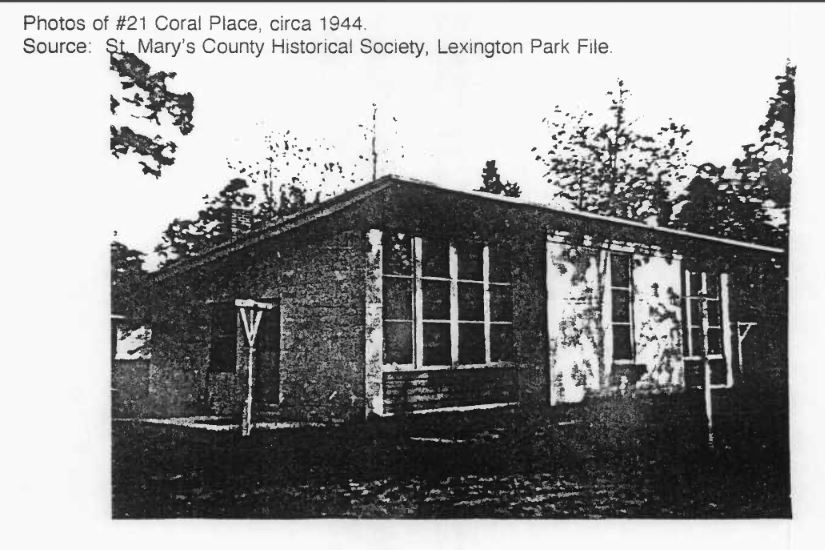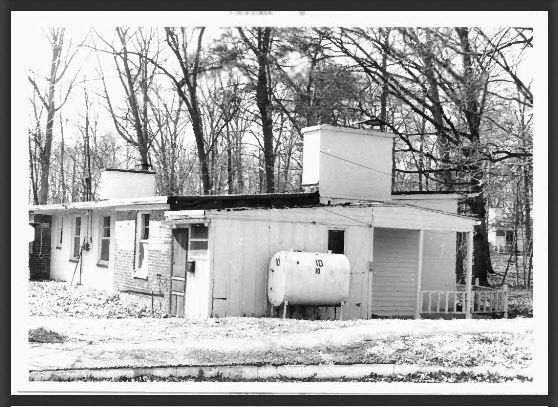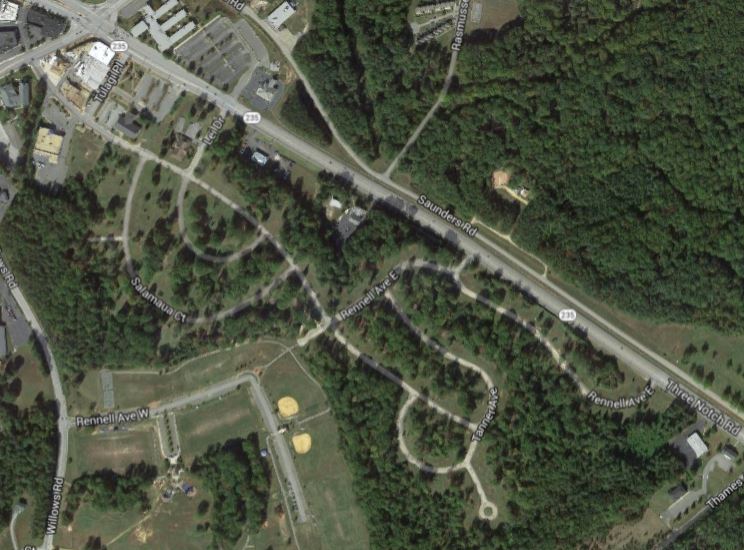“History of St. Mary’s County, Maryland”
by Regina Combs Hammett, 1994 edition:
“Civilian employment at NAS, Patuxent River … began during November, 1942. The earliest employees were paid through Shop 93 of the Washington Navy Yard. On March 1, 1943, official payrolls were established at NAS. When the base was officially commissioned on April 1, 1943, there were 173 civilian employees. The number gradually increased until by July 31, 1945, the number had reached 2,414.
“It was apparent from the first that existing housing in St. Mary’s County could not accommodate the great influx of workers. As the number of employees increased Navy authorities considered possible solutions to the housing problems. After some consideration the proposal to construct permanent civilian housing aboard the station was rejected. It was not deemed desirable to plan permanent housing inside the confines of a military base. The decision was reached to construct civilian housing close to the station, thus reducing the necessity of utility extension. Two power plants, one diesel and one steam, provided the base with its own electrical power, and thirteen 500-feet-deep wells had been sunk to provide an abundant supply of water.

“The site of Jarboesville, just outside the main gate at the intersection of Routes 235 and 246, was chosen as the place to build civilian housing. The first construction consisted of 150 family units. The buildings were flat, one-storied structures constructed of cinder blocks and were immediately nicknamed the “flat tops.” Each building was divided in half to accommodate two families. The first 150 units were completed in the fall of 1943. The new town was named Lexington Park — Lexington for the World War II aircraft carrier. The streets were laid out and named for World War II battles. Lei, Coral, ShangriLa, Salamaua, and Tulagi have endured as lasting reminders of our presence in the South pacific area during the 1940s.”
Designed by Renowned Architects
“The houses and site plan… are the work of the nationally recognized architectural firm Kahn and Jacobs and the regionally recognized Washington DC architect Louis Justement,” according to the Lexington Park historical survey completed in 1995 by Elizabeth Hughes, the Maryland Historic Preservation Officer.
“The thing that is so striking to me,” Ms. Hughes was quoted in Joseph Norris in an Enterprise article in April, 1995, “is that it was designed by very well known architects … It is fascinating to think of Ely Jaques Kahn, A classically trained architect, coming into St. Mary’s County and designing what was basically the first planned developments here.”

The 200 units that followed the initial 150, were designed similar to the Kahn and Jacobs homes, but Louis Justement altered decorative details, added fireplaces and updated from coal to oil-fired furnaces.
There Still Are Cherry Trees
The federal government sold them all, in 1962, to Club Properties, which planted Japanese Cherry trees throughout the neighborhood and from there things went down hill. The investors managed the homes as affordable rentals, then low-income and ultimately as deteriorating and abandoned rentals.
Fueling some of the demise was a 1979 overflight safety zone imposed over swaths of Lexington Park. The Navy wanted a bigger buffer outside its fence that held fewer people. The 1942 decision to build Lexington Park adjacent was no longer in the best interest of the Navy. In 1979, The Flattops and much of the core of Lexington Park, no longer supported the Navy’s mission, they threatened it.

Property values in the overflight shadow fell. Financing for expansion or even improvements was not available on properties zoned to shrink in usage. For decades re-development proposals failed to secure permitting approvals. The Flattops deteriorated and were sold back to the government, landing in county hands, in 2003.

All but one of the homes was demolished in 2004. The single unit remains at Rennell Avenue and Lei Drive and houses the United Committee for African-American Contributions. The UCAC is also responsible for the Colored Soldiers Memorial within sight of the remaining Flattop in Lancaster Park and also the memorial at Freedom Park at the most northern end of The Flattops.
The county maintains an 18-basket, disc golf course on the cleared portions of the southern 50 acres.
St. Mary’s Community Development Corp. is building a plan to return the vitality of the old neighborhood to The Flattops. With due consideration to the overflight restrictions, the CDC plan will seek to maintain the open space of the southern 50 acres and enhance the upper 35 acres as a venue for performing and installation artists.
